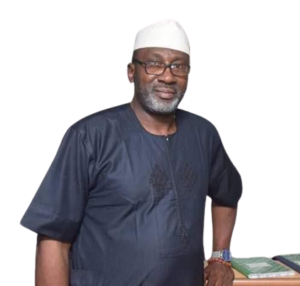New research has moved the world one step closer to reliable, high-performance quantum computing. A ground-breaking single-electron “pump” device developed by researchers can produce one billion electrons per second and uses quantum mechanics to control them one by one.
University of Adelaide-led research has moved the world one step closer to reliable, high-performance quantum computing.
An international team has developed a ground-breaking single-electron “pump.” The electron pump device developed by the researchers can produce one billion electrons per second and uses quantum mechanics to control them one by one. And it’s so precise they have been able to use this device to measure the limitations of current electronics equipment.
This paves the way for future quantum information processing applications, including in defence, cybersecurity and encryption, and big data analysis.
“This research puts us one step closer to the holy grail — reliable, high-performance quantum computing,” says project leader Dr Giuseppe C. Tettamanzi, Senior Research Fellow, at the University of Adelaide’s Institute for Photonics and Advanced Sensing.
Published in the journal Nano Letters, the researchers also report observations of electron behaviour that’s never been seen before — a key finding for those around the world working on quantum computing.
“Quantum computing, or more broadly quantum information processing, will allow us to solve problems that just won’t be possible under classical computing systems,” says Dr Tettamanzi.
“It operates at a scale that’s close to an atom and, at this scale, normal physics goes out the window and quantum mechanics comes into play.
“To indicate its potential computational power, conventional computing works on instructions and data written in a series of 1s and 0s — think about it as a series of on and off switches; in quantum computing every possible value between 0 and 1 is available. We can then increase exponentially the number of calculations that can be done simultaneously.”
This University of Adelaide team, in collaboration with the University of Cambridge, Aalto University in Finland, University of New South Wales, and the University of Latvia, is working in an emerging field called electron quantum optics. This involves controlled preparation, manipulation and measurement of single electrons. Although a considerable amount of work has been devoted world-wide to understand electronic quantum transport, there is much still to be understood and achieved.
“Achieving full control of electrons in these nano-systems will be highly beneficial for realistic implementation of a scalable quantum computer. We, of course, have been controlling electrons for the past 150 years, ever since electricity was discovered. But, at this small scale, the old physics rules can be thrown out,” says Dr Tettamanzi.
“Our final goal is to provide a flow of electrons that’s reliable, continuous and consistent — and in this research, we’ve managed to move a big step towards realistic quantum computing.
“And, maybe equally exciting, along the way we have discovered new quantum effects never observed before, where, at specific frequencies, there is competition between different states for the capture of the same electrons. This observation will help advances in this game-changing field.”
Story Source:
Materials provided by University of Adelaide. Note: Content may be edited for style and length.
Journal Reference:
- Alessandro Rossi, Jevgeny Klochan, Janis Timoshenko, Fay E. Hudson, Mikko Möttönen, Sven Rogge, Andrew S. Dzurak, Vyacheslavs Kashcheyevs, Giuseppe C. Tettamanzi. Gigahertz Single-Electron Pumping Mediated by Parasitic States. Nano Letters, 2018; DOI: 10.1021/acs.nanolett.8b00874






